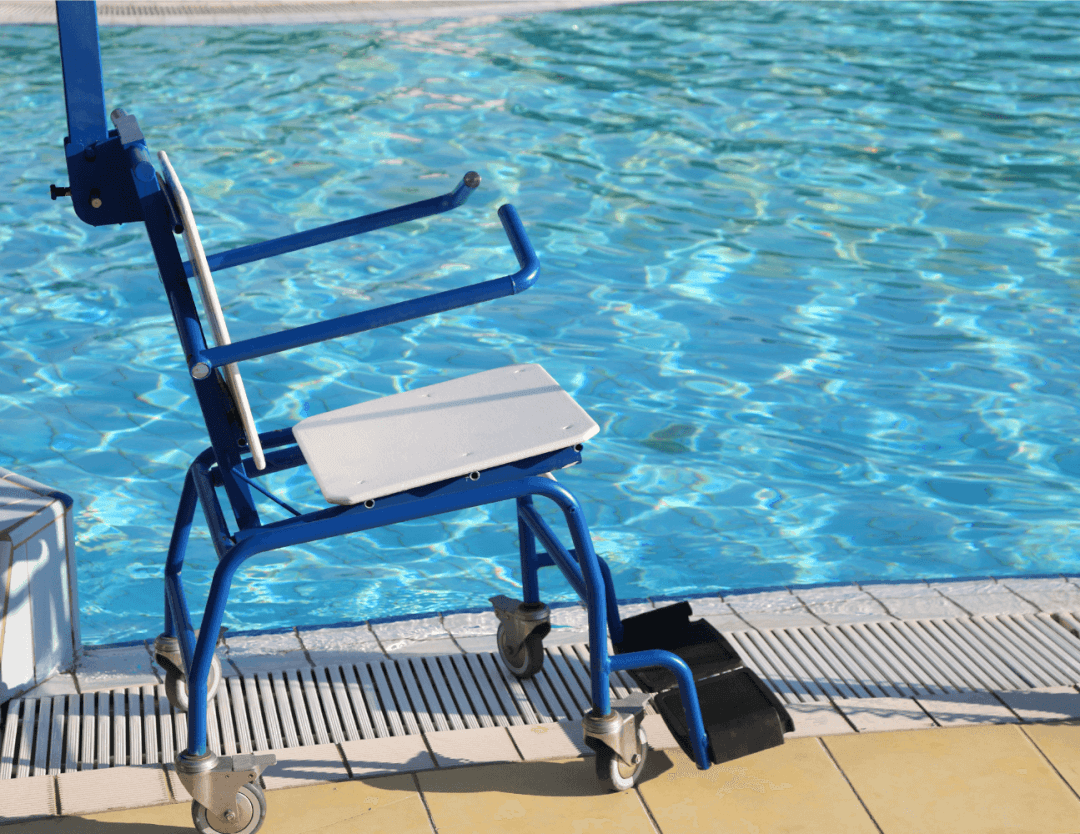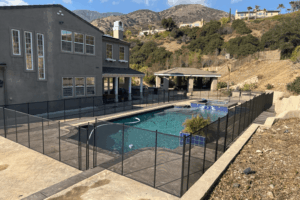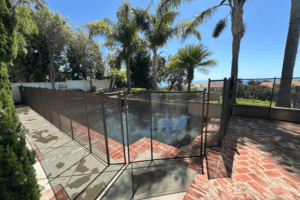
10 Questions to Ask Before Buying a Pool Safety Fence
Don’t buy a pool safety fence without asking these essential questions. This buyer’s guide helps you evaluate height, compliance, materials, installation, and more.

You’ve worked hard to create a welcoming backyard oasis for all your friends and family, and that means making sure guests have the swimming pool accessibility they need for the safe enjoyment of it. Modern commercial swimming areas are often built with ADA-compliant pool features, but private pools may not meet those same standards of inclusion. With the right design and pool equipment, you can get your pool ready for use by people with different mobility and ability concerns to ensure everyone can have a better, safer swimming pool experience. You can create a pool that’s easier to use for differently-abled persons while still making it a safer experience that helps protect them from accidental drowning injuries.
It’s not uncommon for pool owners to not worry about swimming pool accessibility until it impacts their lives or the life of a loved one. From temporary injuries to long-term conditions and the effects of aging, there is a myriad of reasons your pool use needs can evolve over time. It’s also important to note that “accessibility” is not a single condition but refers to preparing the pool to meet the unique needs of the people using it. That can include easier entry, better support for a loss of dexterity, and improved utility for aquatic therapy.
While improving swimming pool accessibility is a prime concern, even ADA pool areas need to have the appropriate safety equipment to make sure your loved ones are protected. Thousands of lives are lost annually to accidental drownings, and a lack of safety barriers has been cited as a contributing factor in the majority of them. Many accessibility features and devices are designed to aid water entry and exit, making preventing unsupervised pool access even more important for the safety of all swimmers, especially those differently-abled.
While there are plenty of assistive devices designed to meet ADA pool needs, each pool owner will need to determine what equipment is best suited to meet their unique needs. We’ve compiled a list of some of the most common swimming pool accessibility features and equipment, but organizations like the Association of Aquatic Professionals, USA Swimming, the American Red Cross, and local affiliates may have more extensive options and resources available.
Designed to help mobility-impaired swimmers enter and exit the pool more easily, these bypass stairs and ladders by using a manual or electrical mechanism to lift people in and out of the water. These can be helpful for both wheelchair users and those who are semi-ambulatory who still want to enjoy full use of the swimming pool.
A common swimming pool accessibility modification on pools with stairs is the installation of a ramp that allows easier entry to the water. This avoids the addition of equipment around the swimming pool deck itself, making it a less intrusive approach when appropriate for the needs of your guests.
Railings are an important safety feature in and around the pool area. With wet surfaces that can easily become slippery, buoyancy and currents that shift a person’s balance, and the ever-present danger of submersion, handrails are a smart swimming pool accessibility choice for a wide range of conditions and concerns. Professionally installed, they can improve safety during entry and exit, while moving around the outside of the pool, and inside the pool during a wide range of activities.
We’ve talked before about the need for emergency rescue, resuscitation, and first aid equipment around your pool. When improving swimming pool accessibility, don’t forget to factor ability concerns into the equation. Someone with limited manual dexterity may have trouble grabbing a flotation device. You may need to plan around getting potential drowning victims to a hoist instead of the stairs. Consider what may be needed in a worst-case scenario to help a distressed swimmer, and make the additions or modifications to your emergency equipment that are necessary.
When considering your swimming pool accessibility, don’t forget to include the differently-abled persons you’re adapting your pool for and their care team. It can be difficult to discuss medical and aging conditions frankly, but it’s necessary to ensure the pool meets everyones’ needs while better protecting them from accidental drowning. They’re in the best position to understand the challenges they face, their abilities, and potential complications.
Your local All-Safe Pool installer is the go-to source for swimming pool protective barriers. Talk to your pro about your swimming pool accessibility needs and any equipment installation plans so they can take the proper measurements to give you the most accurate quote possible. Your written quote comes with no obligation while laying out your pool protection options. Get a free quote from your independent All-Safe Pool pro today.

Don’t buy a pool safety fence without asking these essential questions. This buyer’s guide helps you evaluate height, compliance, materials, installation, and more.

Understand how local pool fence codes work and what to check before installation. This beginner’s guide simplifies requirements so your safety barrier complies and protects effectively.

Learn the truth behind common pool safety myths and make better decisions to protect your family with fact‑based guidance on fences, barriers, and maintenance.
Enter your zip code to locate an independent installer in your area
Enter your zip code to locate an independent installer in your area

Due to the many variations in monitors, phones, and browsers, color samples and product examples may appear different on different screens. Computers and mobile devices are not all calibrated equally and color reproduction on the Internet is not precise. The same is true for printed items such as brochures and other sales literature.
In addition, the colors of our products photograph differently under different lighting conditions. For example, photos taken in full sunlight will vary from photos taken on a cloudy or overcast day. Similarly, shadows from nearby objects can affect the color and transparency of our products. If a precise color or specific shade is important, please inspect the actual color of your product prior to installation.
Many of our products’ materials are not available through typical stores and vendors and therefore must be custom manufactured specifically for our use. In order to control costs and provide you with the best value possible, our raw materials are produced in large batches and can often take several months to receive. The colors of our materials can, and often do, vary slightly from batch to batch. Although we make every effort to minimize color variations, we cannot be responsible for these differences when they occur. If a precise color or specific shade is important, please inspect the actual color of your product prior to installation.
For example, we use the name “putty” to describe some of our products. Your idea of the color “putty” may be different than someone else’s idea of “putty”. In addition, products may have the same color name but may not be the exact same color. For example, we have different shades of “black”. Please do not order using color names as your only guide. If a precise color or specific shade is important, please inspect the actual color of your product prior to installation.
If it is important that your product be an exact color or shade, it is highly recommended that you inspect the actual product prior to its installation and address any concerns with your local independent installer. Most independent installers do not offer refunds or accept returns due to color variations.